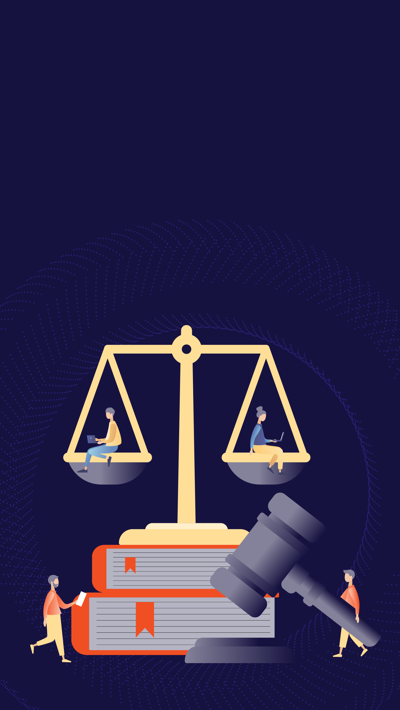Contents
The economy bounced back relatively quickly when we entered Level 2 last year but, at least for Auckland, this lockdown has been much longer and those businesses most deeply affected – retail, hospitality and tourism – may not be as resilient as they were in 2020.
Company directors would be unwise to plan only for the V shaped recovery. Unfounded optimism is not a legitimate basis for continued trading. And in 2021, all New Zealand businesses will need to deal with the impact of rising interest rates, supply chain constraints and the challenges of employee retention.
For all of these reasons, we believe that company directors should be undertaking a rigorous process as they contemplate an economy that lives with COVID-19 (in contrast to an economy that has eliminated COVID-19).
So what should boards do?
Strategy
For many companies, strategy has been centred on endurance – continue operations with a tight control on costs until economic activity returns to normal. Lenders have supported the endurance strategy and acted responsibly by making working capital available and relaxing covenants.
The Government has provided previously unimaginable support for business directly through the wage subsidy and indirectly through the bank guarantee scheme. And many landlords have renegotiated lease terms.
But the end date for the endurance strategy is fast approaching. Once New Zealand achieves an acceptable level of vaccination, companies will need a post-COVID strategy. That post-COVID strategy will need to assume:
- limited Government support: Further wage subsidy support is unlikely to be required once an acceptable level of vaccination is achieved. But significant tax relief and lending support for business is also unlikely. Government debt has risen from approximately $60b in 2019 to over $100b in 2021. The Government will want to ensure that its balance sheet is in a position to respond to any new crisis
- increased borrowing costs: While interest rates remain at historically low levels, debt servicing costs will increase. The RBNZ has raised interest rates for the first time in seven years and market commentators expect additional rate rises in 2022, and
- inflation: Headline inflation is expected to increase by four percentage points in the near term as a consequence of higher oil prices, rising transport costs and supply shortages.
Boards and management should be setting their “post-COVID” strategy now. Lenders will want to understand the “post-COVID” business plan in order to re-set financial covenants and assess further lending support. Shareholders will want to understand their likely returns and whether further capital is required.
The business needs to forecast its performance as against that strategy. Those forecasts need to take potential headwinds into account. The board needs to carefully monitor trading performance against forecasts.
Operations – set a vaccine policy
But for many boards the most pressing issues will be operational health and safety. How will they deal with unvaccinated employees? Will customers expect the business to disclose whether its employees are vaccinated? Will the business require corresponding vaccine confirmation from customers and suppliers?
These are difficult questions – complex legal issues (health and safety law, individual human rights and employment law) will compete with the laws of market demand and market power.
We think that boards should ensure that the company:
- engages with its key suppliers, customers and employees to ascertain their expectations (particularly where New Zealand subsidiaries may be subject to international policy)
- tests prospective policies or settings, and
- obtains professional advice on its preferred vaccination policy.
Once the vaccination policy is set, directors need to be careful to monitor the implementation and operation of it. They cannot delegate their health and safety obligations.
The wave of insolvency
Many expected a wave of insolvency and falling house prices after the economy took the 2020 COVID-19 hit. Instead, we’ve seen the opposite. But our economic history tells us that there is often a gap between “black swan” events and business failure – for example, the 1987 stock market crash impacted New Zealand most deeply in 1991.
And, while many businesses will thrive in a re-opened economy, there will be some that will not survive. Indeed, a number of high profile hospitality businesses have already announced that they won’t be re-opening.
It’s important that directors recognise that in the post-COVID landscape.
So, who are you reliant on?
While your company may be doing everything right and trading profitably, not everyone else may be. It’s important to understand whether your business has a “network weakness” (an operational dependence on any one counter-party). So, the board needs to:
- ensure that the company is engaged with any key counter-party so that it can assess the risk of failure, and
- consider whether there are alternative options should any key counter-party fail.
Subsidiaries and joint ventures matter too
Typically boards think on a consolidated basis and groups of companies operate on a cash pooling basis. But the Courts are very clear that when determining whether directors have complied with their director duties, directors need to act on an entity-by-entity basis.
Directors will need to think about how any post-COVID reorganisation or restructuring impacts on that individual company and its creditors.
There are options
If you are a director of a company that has lost too much revenue and now has too much debt – there are options.
It may be that the business can be saved in a new capital structure. There are a number of restructuring tools that can be used: debt can be forgiven; rescheduled and converted into equity. Sophisticated financial creditors understand that processes like voluntary administration and creditor compromises can provide better returns than immediate liquidation. And counter-cyclical investors have raised large funds for distressed investment.
Next steps
Please get in touch with one of our experts if you would like to discuss this topic further or you would like any assistance.










































































































